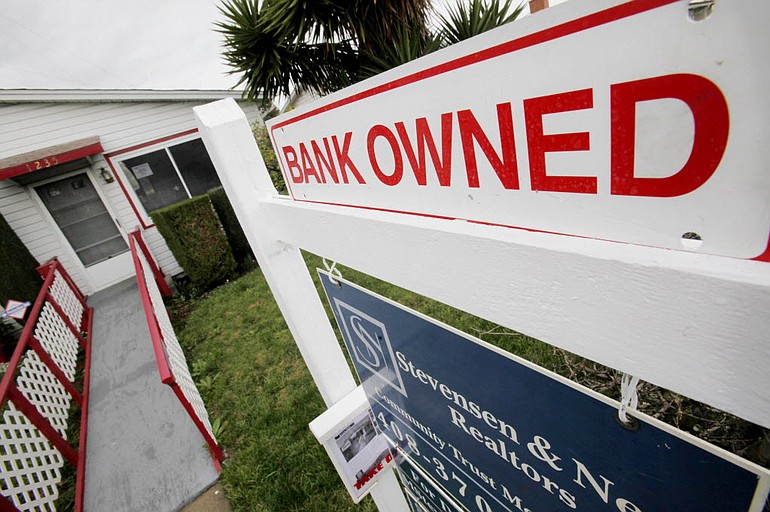The number of Clark County houses in foreclosure surged to 553 in August, an 88 percent rise over last year and a 10.6 percent climb in just one month.
The increase is not as severe as the numbers suggest, because August 2009 foreclosures were artificially low. But local foreclosure rates are likely to stay high for months or years until employment rebounds and property values start climbing again.
With one in every 305 homes affected, the county’s foreclosure rate continued to be among the state’s worst, moving to third-highest among all of Washington’s 39 counties, up from fourth-highest rate in July. Lewis and Snohomish counties were worse off.
Washington had the 14th-highest rate of foreclosure in the U.S., with one in every 413 homes in some stage of foreclosure. Nationally, one in 381 was threatened by foreclosure in August.
Two government programs aimed at helping a struggling housing market mean that August’s foreclosure snapshot is imprecise. Year-ago foreclosures were artificially lowered by a state program that, starting in August 2009, added 30 days to the foreclosure process. And this August’s foreclosure rate was likely higher because of the end of a federal program that inflated home sales in the first half of the year.
Some local experts believe that a third government program is also contributing to the recent increase in foreclosures.
Many homeowners have recently lost the temporary reprieve offered by the federal Home Affordable Modification Program (HAMP), said Bill Black, business development manager at the Vancouver-based law office of Robert Russell, which deals with mortgage default clients through the Northwest Short Sale Network.
Over the past six to 18 months, banks and lenders were overwhelmed by a backlog of delinquent properties. HAMP, aimed at helping financially struggling people to modify their loans, bought homeowners time, Black said. “Now the banks are finally getting the systems in place to foreclose.”
An increase in foreclosures also coincides with falling home sales, which are linked to the end of federal tax credits that gave buyers up to $8,000 if they signed a contract by June 30 to buy a house.
County home sales dropped by 48 percent in July and were down by 24.4 percent in August.
Without the incentive, buyers are scarce, said Dick Riley, owner of the Vancouver appraisal firm Riley & Marks.
In the meantime, high unemployment rates and depressed property values continue to leave borrowers unable to make their house payments or to sell.
“The tax credit helped keep foreclosures down,” Riley said. “Also, it comes down to jobs and job security. People say, ‘Do we give up the groceries or give up the house?’”
Riley estimated that homes on the verge of foreclosure made up about 20 to 25 percent of the homes sold in Clark County earlier this year, when the tax credit spurred robust sales from September 2009 through June.
Clark County home values have fallen by approximately 23 percent in three years, going from a median price (half sold for more, half for less) of $282,400 in August 2008 to a median of $216,115 this August, according to “benchmarks,” a Vancouver real estate data service.
“People took for granted that homeownership in the U.S. would always be a great investment,” Riley said.
The theory didn’t work out for homebuyers who purchased at the height of the market, or for those who used their equity as collateral for additional loans.
“When the pressure mounts, people just hunker down,” Riley said.
According to RealtyTrac, the number of U.S. households on the verge of foreclosure in August was 338,836, up 4 percent over the previous month, but down 5 percent from August 2009.
RealtyTrac spokesman Daren Blomquist attributed the year-over-year drop to improvements in states that were hit early with the most severe foreclosure rates, such as California, Florida, Nevada and Arizona. He cautioned, however, that foreclosures could remain high for months, receding only with U.S. job growth and appreciating home values.
“The numbers will probably remain stubbornly high for a long, long time,” Blomquist said.



